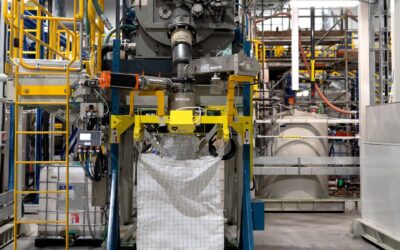The U.S. Inflation Reduction Act has reshaped the global climate policy landscape, pressuring governments to consider the implications for their own climate policies and their economic competitiveness in a low-carbon world.
The Act represents the most extensive investment in climate solutions in U.S. history. It includes a wide range of tax credits, grants, and loans for clean technologies, totalling US$370 billion over 10 years to accelerate the nation’s energy transition. Subsidies are available to clean tech manufacturers, consumers seeking to electrify their households, and communities implementing adaptation projects. The Act is expected to reduce U.S. emissions to 40 per cent below 2005 levels by 2030, create green jobs, and reduce inflation.
Yet the Act has unexpectedly put Canada in a peculiar position. While the lack of U.S. climate action has often been invoked to argue against ambitious policies in Canada, the Act suddenly puts Canada under pressure to catch up with its most important trading partner. Without similar commitments from Canadian governments, investors and project developers may take their business south, leaving Canada unable to attract the necessary private capital to decarbonize its economy and meet its 2050 net zero target. However, the U.S. legislation could also create export opportunities for Canada, specifically for electric vehicles, batteries, and construction materials.
How should governments respond to ensure Canada doesn’t get left behind in the wake of the Inflation Reduction Act? Here are three options for a path forward.
Option 1: Strengthen existing policies
The first option is to rely on policies that are already on the books. In contrast to most parts of the U.S., Canada is not starting from scratch when it comes to setting incentives for investment in clean technologies. Several federal and provincial measures are already in place to mobilize private investment into decarbonizing the economy, including carbon pricing, regulations (e.g., clean fuel standards), and some subsidies (e.g., the proposed CCUS tax credits). The 2022 federal budget also included two new mechanisms for mobilizing private investment in low-carbon technologies: the Canada Growth Fund and the Canadian Innovation and Investment Agency.
This option requires exploiting existing policies and instruments to their full potential. Carbon pricing is an efficient tool for steering capital flows away from high-carbon assets into cleaner alternatives. Governments can and should strengthen these market signals by instituting carbon contracts for differences, which significantly reduce uncertainty for investors at relatively modest costs to governments. Similarly, implementing the tax credits and finance mechanisms promised in the last budget may boost investor confidence.
However, these instruments have limitations. In particular when it comes to low-carbon export products, the Canadian carbon price does not help project developers close the profitability gap. Even layered on top of each other, extant Canadian programs may be less generous than those in the U.S. legislation—and more complicated for investors to understand and access.
Option 2: Go big and broad
Another option is to match the Inflation Reduction Act, with Canadian governments announcing similarly large subsidies for clean energy and technology.
Levelling the playing field may be necessary if Canada is to remain a competitive destination for international transition capital, a key driver of job creation and domestic emissions reductions. This option may also help to address the nation’s cost-of-living crisis by better enabling low-income households to participate in the energy transition through targeted subsidies.
The risks of this approach, however, match its ambition. By following the U.S. example, Canada could over-subsidize some technologies, turning public money into corporate windfall profits—particularly in incumbent industries. Perhaps more importantly is the looming fiscal question: how much more capacity do Canadian governments have after the massive pandemic support programs and ongoing crisis requiring financial support, including the war in Ukraine, and responses to extreme weather events?
Option 3: Be selective
Canadian governments could find a middle path, with new public supports, the strengthening of existing policies, and some subsidies for a few, targeted technologies or project types. This approach requires asking hard questions: What are Canada’s competitive advantages that enable success in a net zero future? What technologies have the most value for Canadian society at home (in terms of employment, rural economic development, Indigenous economic leadership, energy security)? And, last but not least: What are the most important technological levers for achieving Canada’s emissions reduction targets?
To reduce windfall profits and fiscal pressure, as part of this option governments could also choose policy instruments with market driven elements to share risk.
This approach risks betting on technologies that do not live up to their potential for reducing emissions and/or attracting private capital. International investors may still choose to put their money in U.S. projects where direct government support is abundant and easy to access.
There is a cost to acting slowly—and a high price to acting in haste
While the Inflation Reduction Act continues to reverberate across Canada, governments are under pressure from industry and investors to respond quickly. Global capital will not sit around and wait—it will quickly move to where returns are highest.
At the same time, what investors desire most is certainty. Whichever path governments choose, their response must be transparent and stable over time as investors need to trust that governments will keep promises. Making rash decisions that require a course change is costly and may cause more harm than good.
To choose the best option, governments need answers: How do current support mechanisms in Canada for clean energy and technology investments compare to U.S. subsidies? What are the challenges that Canadian clean technology developers face when trying to mobilize private capital? What are the implications for Indigenous economic development? And what policy tools other than subsidies have governments worldwide used to support clean technology projects and attract private investment? In the coming months, the Canadian Climate Institute will explore these questions—and the various options—to shed light on the best path forward for Canada. Stay tuned.








